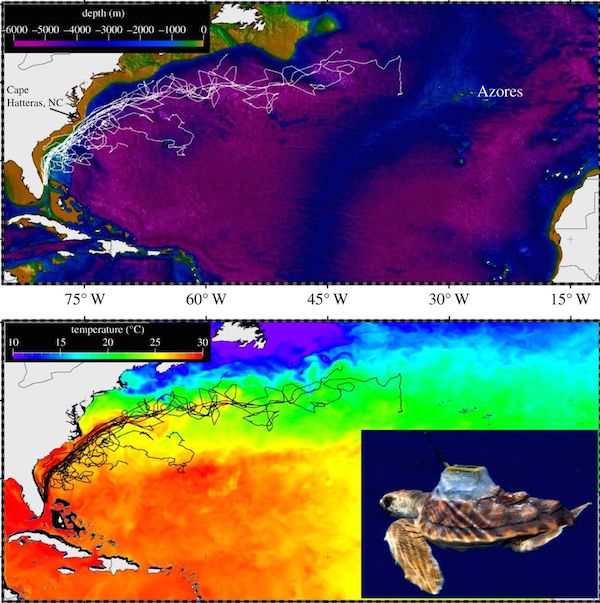WAYNE CREED
Wake Up to Danger of Saltwater Intrusion
By WAYNE CREED
July 21, 2014
A few nights ago, plagued by a fit of insomnia, I downloaded a copy of the Cape Charles Planning Commission’s June 30 meeting agenda. Hoping the content would induce a much needed sleep, I quietly perused the document. As usual, it was filled with the same vapid and gooey pap that has come to define the Natali-McCoy Planning Commission. There was some talk of promoting a museum for the Chesapeake Bay Impact Crater, but then, buried deep down in the weeds, a discussion of saltwater intrusion, and how it will affect the Town. In a cavalier, dim, nonchalant tone, it states:
The Town has limited groundwater resources. In the future, saltwater intrusion may necessitate the Town update water treatment technologies or possibly obtain water from a different location.
So, what are they talking about? In a nutshell, saltwater intrusion (high concentrations of total dissolved solids making it unfit for human consumption) is the movement of saline water into freshwater aquifers. Aquifers are saturated geologic materials that yield usable quantities of drinking water to wells. In our case, we rely on the Columbia and Yorktown-Eastover aquifers and there are no other viable economical alternative drinking water sources. The Columbia and Yorktown-Eastover aquifer is considered highly vulnerable to salt water contamination due to the high levels of ground-water pumping from coastal wells (like our Keck wells). As towns like Cape Charles continue to over-develop (large developments such as Bay Creek ), ground-water use increases to the point that these areas become vulnerable to contamination and brings into question the viability of ground-water sustainability.
Well drillers around here can attest to the abundance of bad-tasting ground water in parts of southeastern Virginia– a large body of salt water, known as a salt water wedge has been blamed for undrinkable ground water that extends from the mouth of Chesapeake Bay into the Columbia and Yorktown-Eastover aquifers. For many years, scientists thought the wedge was caused by the incomplete flushing of ancient seawater that had invaded the aquifers during high stands of the sea. Understanding of Virginia’s inland saltwater wedge changed in 1993 when David Powars of the U.S. Geological Survey and geologist C. Wylie Poag, while studying the Atlantic Coastal Plain made an important discovery. Deep sedimentary cores identified a large impact crater formed by a meteorite near what is now the mouth of Chesapeake Bay ( three times larger than any other U.S. crater and the sixth largest crater known on Earth). [Read more…]
COMMENTARY
Hope for Sea Turtles, One Hatchling at a Time
By WAYNE CREED
June 30, 2014
A few years ago, when my work was based near Oceana Naval Air Station, one of my guilty pleasures was to sneak over to the Virginia Aquarium during lunch and hang out by the loggerhead turtle exhibit. Light and graceful swimmers, those blithe movements belie the power and strength held in their huge heads and jaws which are easily able to crush right through a conk shell. Another guilty pleasure is being able to treat my wife to some sort of pampering from the wonderful Breezes Day Spa in Cape Charles. Recently, these two guilty pleasures sort of came together to help shed light on a scientific mystery that had been plaguing marine biologists for some time.
After Loggerhead sea turtles hatch, they begin a frantic race off the beach into the surf. Once into the sea, the hatchlings start a journey that lasts several years, and when it’s finished, leaves them across the Atlantic near the Canary Islands. How they get there, however, has always remained a mystery. The time between hatching and rediscovery has always been referred to as the turtle’s “lost years.”
For some time now, marine scientists at NOAA have been using satellite tracking devices to monitor the travels of adult turtles. The transmitters are glued to the shell, and location data is beamed back and captured. This worked fine for adults, but young turtles grow so quickly that their shells shed whatever scientists tried to use to attach the transmitters. It was here that a professional spa technician, like those working at Breezes, provided a breakthrough.
Marisol Marrero, who is a nail salon technician at Not Just Nails in Boynton Beach, Florida, had a customer, Jeanette Wyneken of Florida Atlantic University, who was also part of NOAA’s Southeast Fisheries Science Center study tracking loggerheads. While getting her nails done, Wyneken was reflecting on the problem of getting the transmitters to stick to the baby turtles’ shells, which she mentioned are made out of a protein called keratin, the same material as fingernails. Ms. Marrero suggested that they try a similar technique that the salons used for attaching artificial nails: try using an acrylic base coat. Wyneken took the suggestion back to the lab and tried it. It worked. This serendipitous trip to the salon has helped to finally shed new light on sea turtles’ “lost years.”
Curiosity Cat Brings Kids Together Around the Shore

Cast members attend Northampton, Kiptopeke, Occohanock, Nandua, Broadwater, and Cape Charles Christian schools.
By WAYNE CREED
May 16, 2014
The harsh winter has finally subsided and given way to warm sun, and the hope of the coming summer. I have to admit, with chronic seasonal affective disorder, it was hard for me to get through this one (they seem to get harder each year). One thing that helped me survive was being able to spend each Saturday morning directing the youth cast of this spring’s youth show, Curiosity Cat: A Danceable Drama for Cats.
I understand that over the past few years, there have been some worries about the plight of our Shore schools, and the kids that inhabit them. From talking to some folks, you would think that we’re talking about inmates in a prison rather than students in a school. Spending any amount of time with this delightful cast would put those fears to rest.
One of the great things about Arts Enter is its commitment to bringing the arts, and the training of the arts, to so many on what is still one of the most historically underserved areas in the state. This has been highlighted with this production, where we have brought kids from all up and down the Shore, from Northampton, Kiptopeke, Occohanock, Nandua, Broadwater, and Cape Charles Christian School. This young cast brought so much energy, passion, and dedication to the task, that by now, it’s even starting to wear this old man out. Tired as I am, I wouldn’t miss a second of it — it seems each time we meet, someone does something so creative and serendipitous, so out of the box, something that fits the production so well, I sometimes have to just sit down and shake my head, thinking, “Where’d they come up with that bizzaro idea — but it works!” [Read more…]
COMMENTARY: Give County Zoning Proposals a Chance
By WAYNE CREED
March 10, 2014
It was reported in an opinion piece last week in the Wave that the 501(c)(3) Eastern Shorekeeper has decided to enter the fray over proposed Northampton County zoning issues, essentially using a petition and a veiled legal threat to force County Supervisors to follow the “intent” of the Comprehensive Plan. I understand the trepidation, but attempting to tie officials to a document that is outmoded the day it is completed does not seem like an effective approach.
Although required, Comprehensive Plans are only a guide, and the State does not require land use and zoning decisions to be based on, or even consistent with them (they carry no legal intent). They are inherently too old, too ignored, or too irrelevant to ever be of any practical use — attempting to apply them to dynamic systems is the ultimate exercise in futility. [Read more…]
COMMENTARY:
Shore’s Closest Pro Football Team Has Skin in the Game

1983 to present
By WAYNE CREED
February 17, 2014
As Olympians from around the world are meeting in Sochi to compete for gold, two members of Congress, Sen. Maria Cantwell (D-Wash.) and Rep. Tom Cole (R-Okla.) have also forayed into sport by sending a letter to NFL commissioner Roger Goodell, appealing to him to support the effort to change the name of the Washington Redskins. “The National Football League can no longer ignore this and perpetuate the use of this name as anything but what it is: a racial slur,” they write.

1982
Meanwhile, the team and several players have released statements claiming they have received “more than 7,000 letters and emails” in favor of keeping the name, with “almost 200 from people who identified themselves as Native Americans or as family members of Native Americans.” Whether or not the Redskins and the NFL are on the “wrong side of history,” as the senator and representative state, is something to consider. Given that I am married to a Redskins fan, and the Eastern Shore is historically Redskin territory, it might be helpful to review the actual history we may or may not be on the right side of.
The original team dates back to 1932, in Boston, owned by George Preston

1972 -1981
Marshall, Vincent Bendix, Jay O’Brien, and Dorland Doyle. The team played their games at Braves Field, and as a matter of expedience adopted the same name, Boston Braves.
In the first year the team lost $46,000, and Bendix, O’Brien, and Doyle dropped out of the investment, leaving Marshall the sole owner. Marshall, who was having a dispute with his current landlord for the Boston Braves, immediately moved to Fenway Park and changed the name to the “Redskins.” Marshall claimed he did so to honor the team’s coach, Lone Star Dietz, who claimed to be of Native American descent (part Sioux). There is also an account that Marshall chose the

1970-1971
name as an allusion to the Boston Tea Party Patriots that dressed as Native Americans, as a way to send a not so subtle message to his former landlord.
Several years of mediocrity followed until 1936, when the Redskins won their first Eastern Division Title. However, even after winning the title, only 4,000 fans showed up for the final regular season game, at which point a thoroughly disgusted Marshall refused to play the championship game in Boston and instead moved it to the Polo grounds in New York, giving up home field advantage. They lost. [Read more…]
COMMENTARY: Why We Might Join the Beach Club
By WAYNE CREED
February 3, 2014
The review of the new Beach Club at Bay Creek in the Wave, which at first appeared to be a rather innocuous report about the general status of the facility, instead seemed to unleash a firestorm of commentary. As usual, the comments section veered off into the weeds, degenerating into a Wrucke vs. Bender UFC cage match, arguments of gated vs. non-gated communities, Bay Creek’s inability to clear snow off the roads, the Wave’s journalistic style, and even intellectually flaccid attacks against members of Old School Cape Charles.
While all this was going on, my wife was reading the article with excitement — years of working in social work, she is the original inspiration for a silver linings playbook. While I’m complaining, “Where’s the bar? How am I going to get my martinis? Do they expect me to survive on just food and water? Never!,” she’s reviewing the amenities, and quite to my surprise offers, “You know, this place is great. And it’s a great deal. Cheaper than the Y.” Stopping me in my tracks, I asked her, “What you talkin’ bout Willis?”
And then she explained. When she was a kid, she belonged to a pool and racquet club in Northern Virginia. In the summers she would spend her days playing tennis, walking over to Roy Rogers for fried chicken, and generally just lounging by the pool. She would also spend one or two weeks visiting cousins in California, who belonged to a magnificent beach club overlooking the Pacific, just north of San Diego. At that moment, I realized that she wasn’t just trying to be Pollyanna — her memories of those times really did make her happy.
Then I thought of my own youth. We also belonged to a club. Looking back, it probably wasn’t much to look at, and compared to what we see at Bay Creek, probably a bit shabby. But it had a big, clean pool, a couple of tennis courts, game room with pool, ping-pong, a few pinball machines, and an excellent snack bar. When Little League baseball ended in mid-June, we were finally cut loose, free to indulge in the lazy days of summer. Me and my friends would sleep late, and then hop on our bikes and ride over to the pool. Pockets stuffed with lawn mowing money, we would swim, play ping-pong, and eat hot dogs and coke all day, until exhausted, we trekked back home to Mom’s dinner table.
Sometimes during the week, when the pool was marginally empty, me and my friend Ronnie would take his dad’s scuba equipment, and the life guard would let us scuba dive in the pool (as long as they could see us). I’m not sure how many hours you need to be certified to dive, but I’m months past that. Ronnie and I would stay under until we completely drained the tanks. Later we would carefully return them to the racks, and Saturday morning, when Ronnie’s dad was checking them before he went on a dive, after discovering they were empty, we could hear his yell, echoing throughout the neighborhood, “RONNIE!” [Read more…]
COMMENTARY:
Town Should Engage on County Development
By WAYNE CREED
December 17, 2013
As was reported in the Wave, the Cape Charles Planning Commission continues to mull ideas around Route 13 development. This is a critical role at a critical time, and could be argued is their most important task. There have been comments that Cape Charles is already “business ready” and that development should somehow only be directed towards the Town. I’m not convinced a waste water plant and six policemen constitute “business ready” — the reality is that the County will eventually develop outside of town; it has to. It is important that Cape Charles stays engaged so that we can have a voice in how this development takes place.
Unfortunately, the folks in Cape Charles running point on this issue have extremely limited and somewhat backwards notions of just what development means. As usual, they defer to antiquated, sprawl-promoting plans that include hotels and strip malls. In the end, these industries provide little economic boost, and destroy rural character in the process.
Sustainable rural development must become the fundamental principle which underpins our development goals — a multifaceted approach to managing our environmental, economic, and social resources for the long term. The hope is to reverse out-migration, combat poverty, stimulate employment and equality of opportunity, and ultimately improve rural well-being in not just Cape Charles but also the County.
The focus and framework should be around agriculture, medium-scale industries, rural services, and tourism. These policies should promote development which sustains the Eastern Shore’s rural landscapes by proactively protecting natural resources, biodiversity, and our cultural identity. In other words, meet the needs of the present without compromising the Shore’s future. [Read more…]
LETTER: Watch Out for Right Whales
December 6, 2013
DEAR EDITOR,
Now that the air and water has finally cooled, trucks and boat trailers overrun the parking lot and roads around Cape Charles harbor — sure signs that the rockfish season is now in full swing. This time of year also marks the start of the North Atlantic right whale calving season which begins in November and runs through April. The whales are now migrating from their normal habitat in northeast U.S and Canada to the south coast of Georgia and Florida. NOAA Fisheries reminds boaters to be aware of these whales, and to take precautions to avoid collisions. There are fewer than 400 left, making them the most endangered marine mammal in the world.
The right whale got its name from northeast whalers who called it “the right whale” to hunt. These mammals had large amounts of blubber, were very slow swimmers, and once harpooned, tended to roll over and float, making them easy to strip and clean. Chapters 93-96 in Melville’s Moby Dick describe capturing the whale and the process of cutting the blubber into sections and preparing it for rendering.
Adult whales average 40-55 feet in length, can weigh up to 140,000 pounds, and may live up to 50 years. They spend the majority of their lives in the zooplankton- rich waters off northeastern U.S. and Canada. (Having no teeth, they mainly feed on copepods, euphausiids, and cyprids). In the fall of each year pregnant females migrate south to give birth to calves that are 10-15 feet long and weigh up to 1.5 metric tons. After birth, the calves drink mother’s milk for 8 to 17 months.
The coasts of Georgia and Florida are the only known calving areas for right whales, and NOAA wants to raise awareness of their migratory patterns and movement. The biggest issue is that, even as it would seem easy to spot something as big as a whale, in reality it is very difficult. They are dark, do not have dorsal fins, and swim just below the surface of the water. The only way is to be keenly aware of any changes in the texture of the water surface. [Read more…]





















